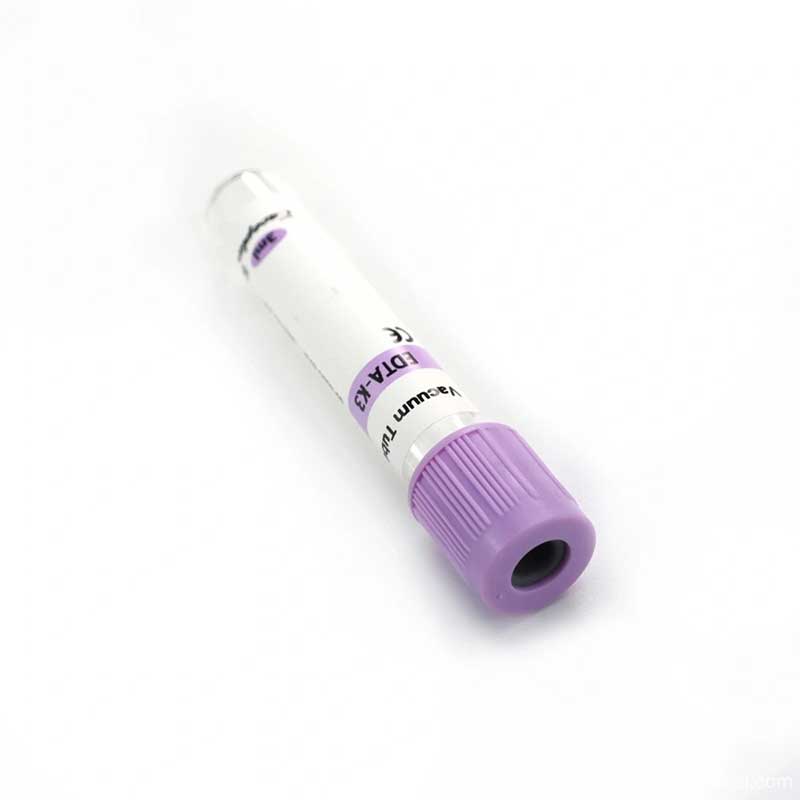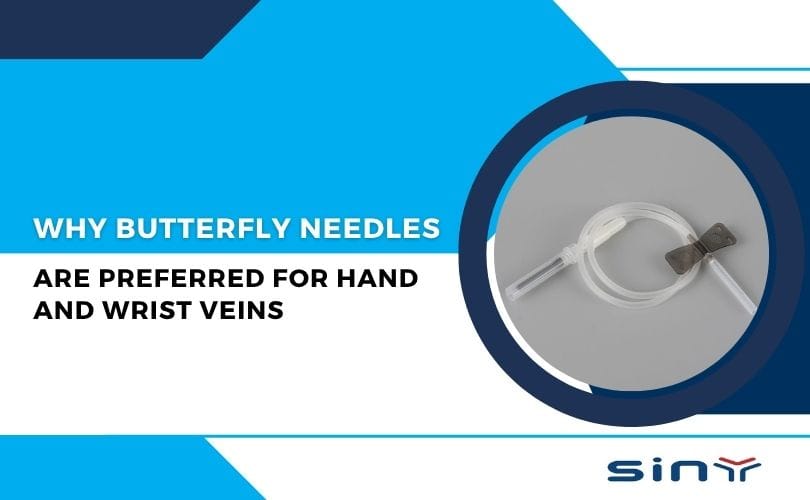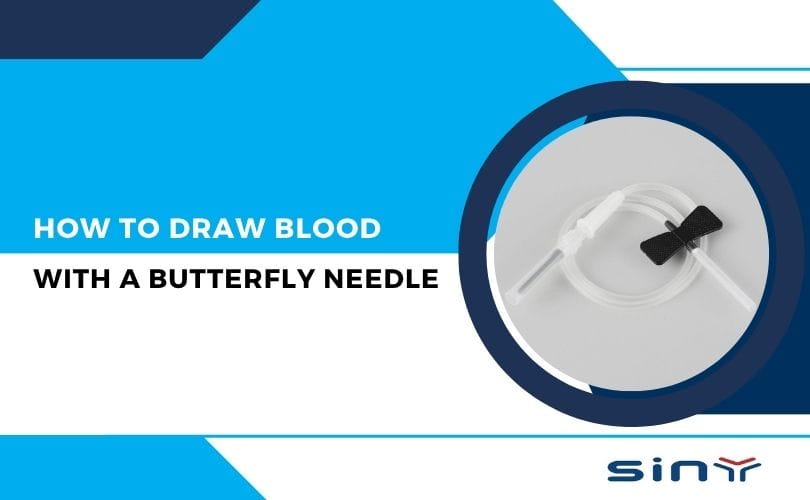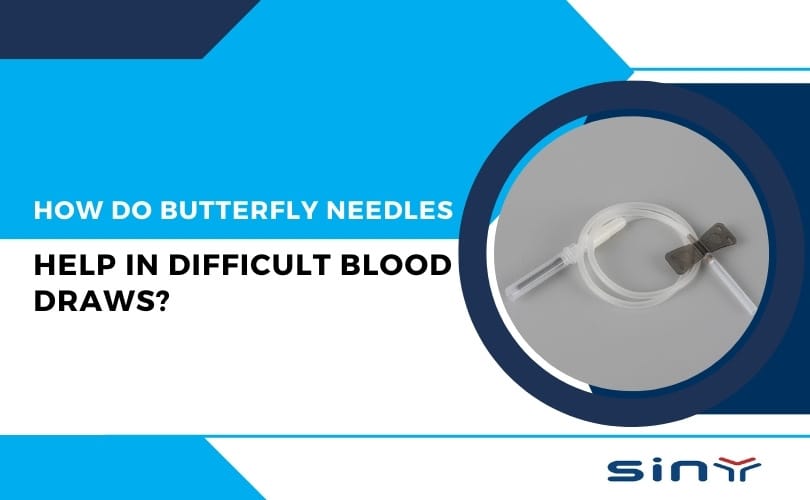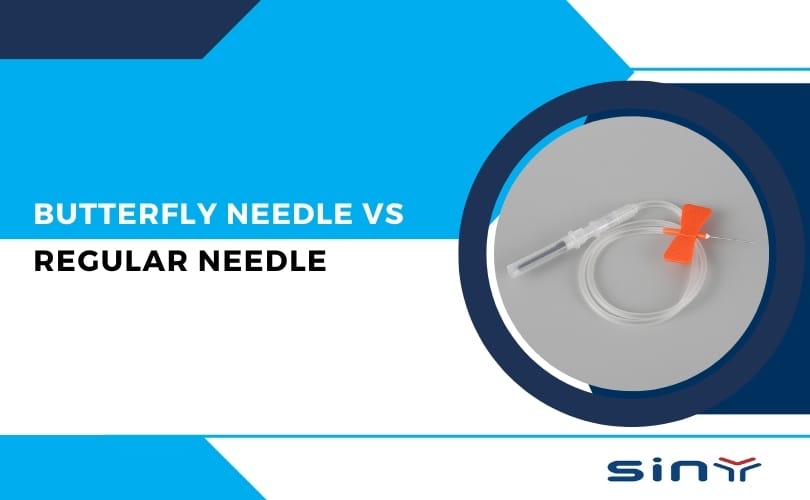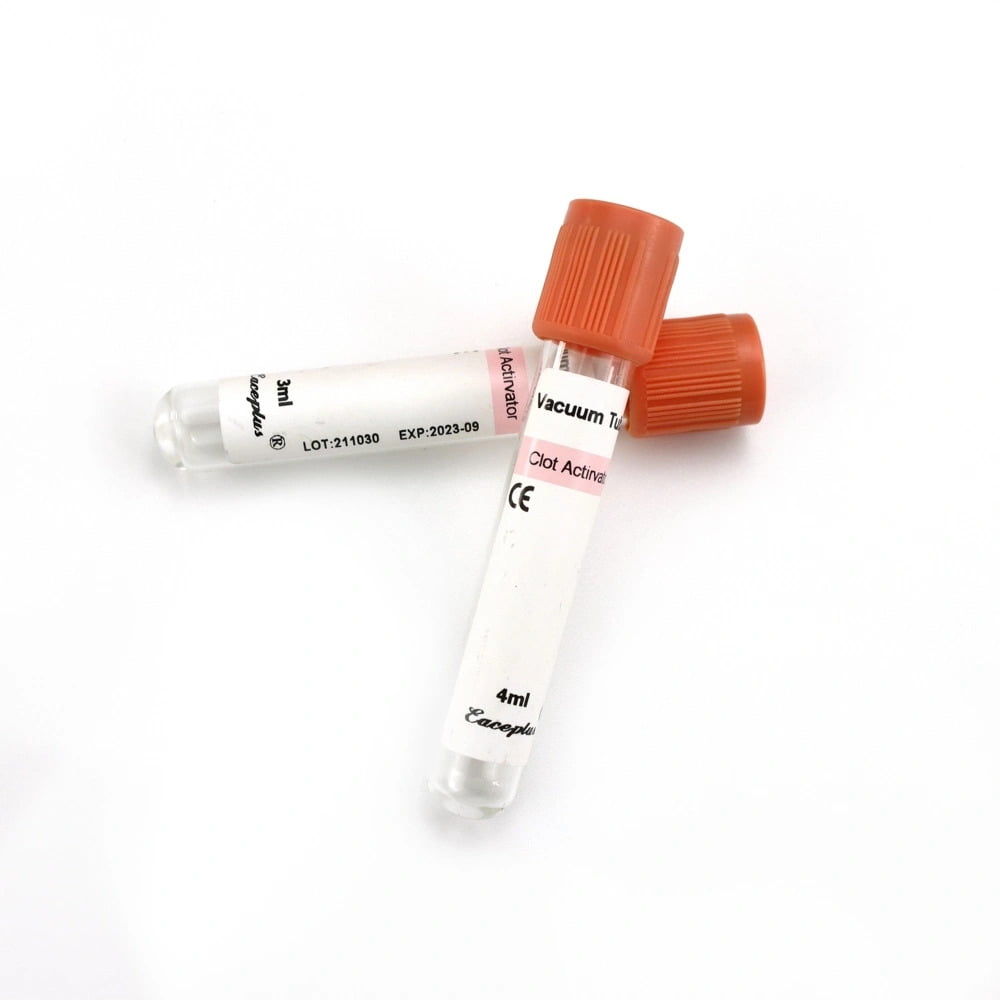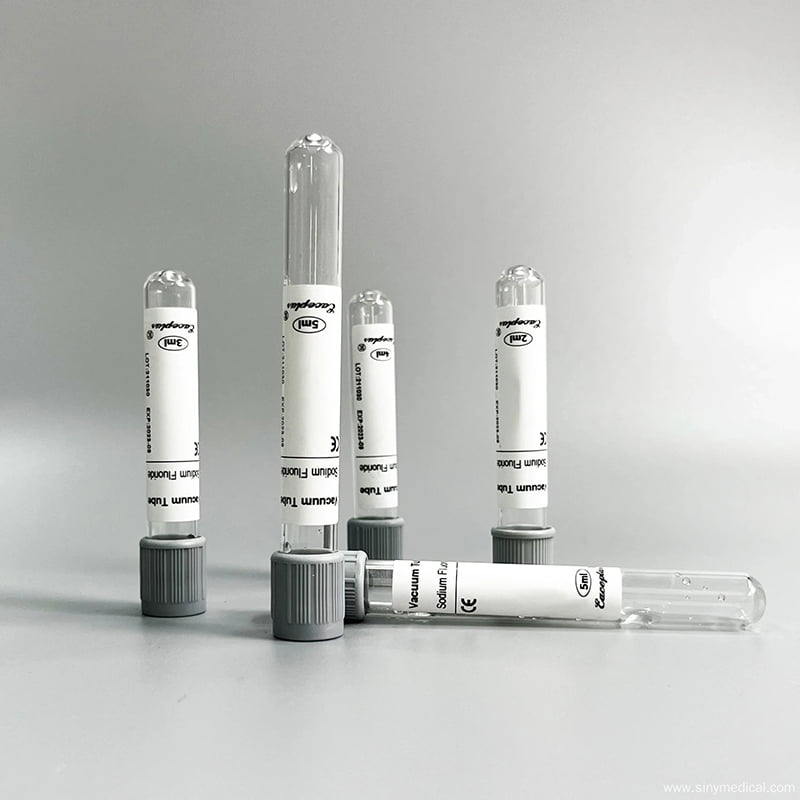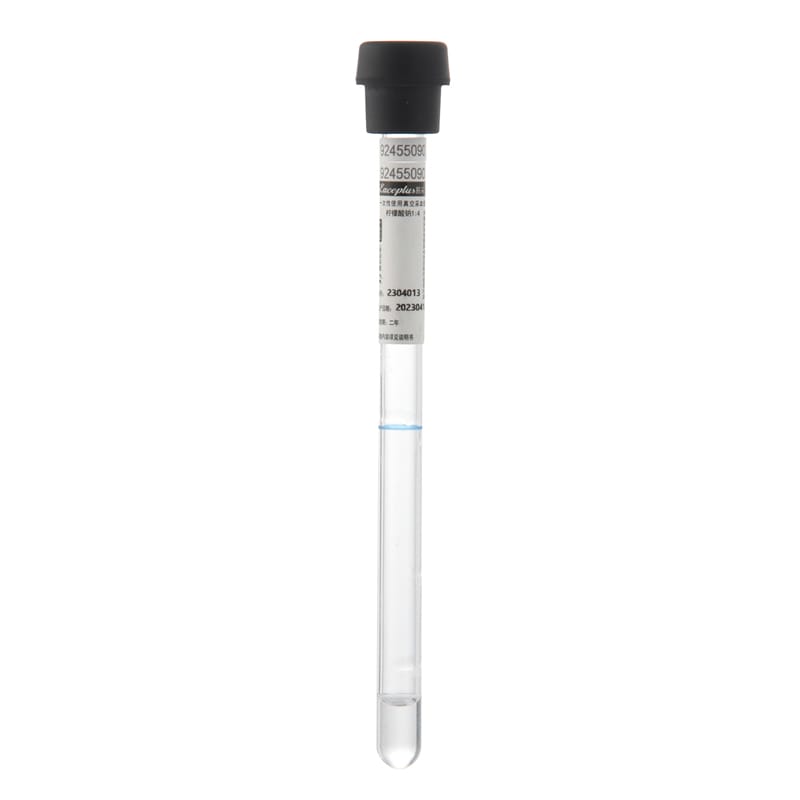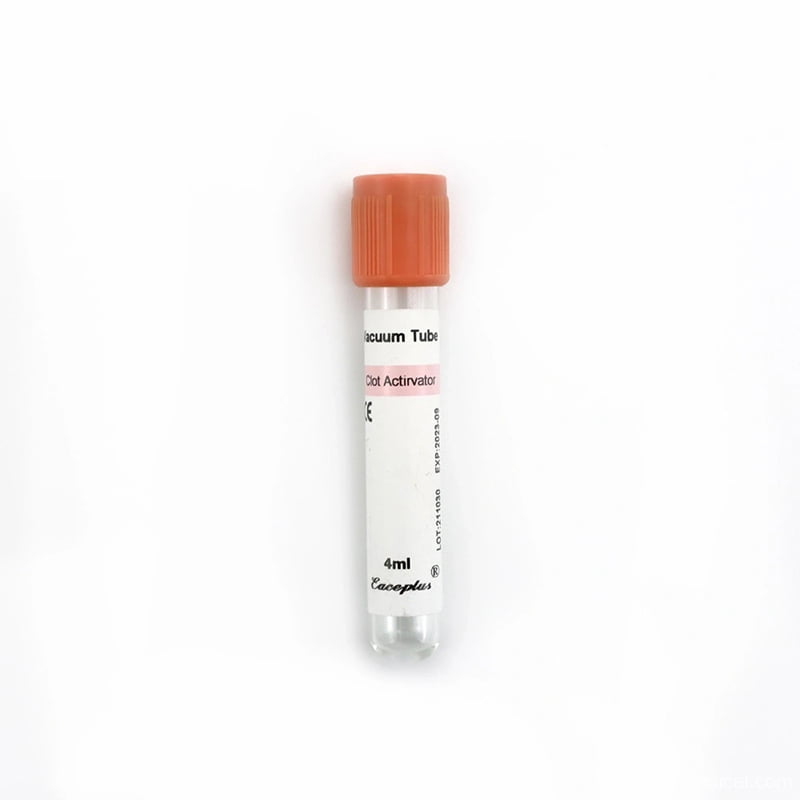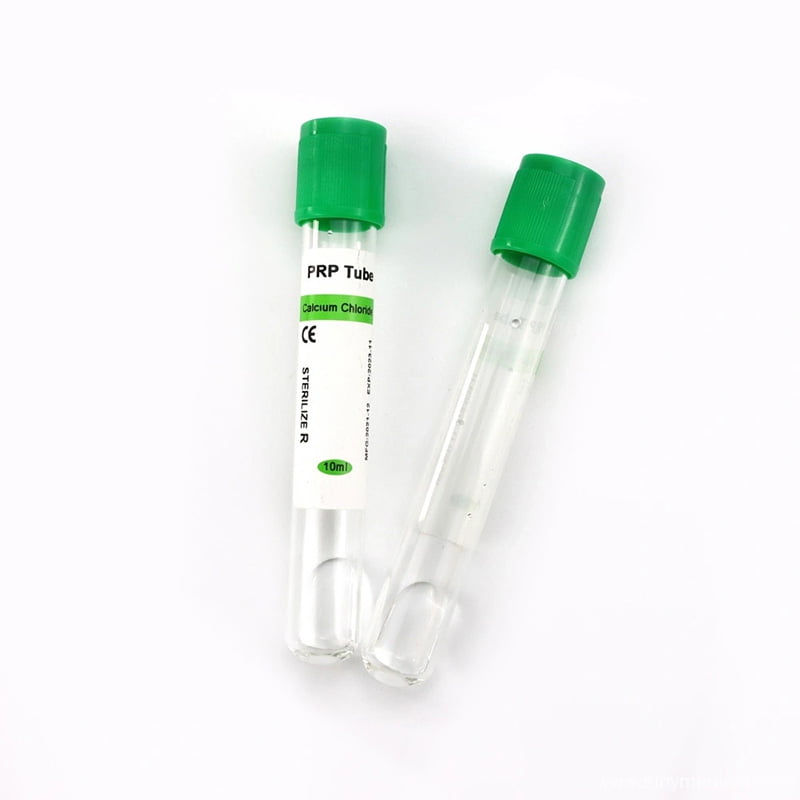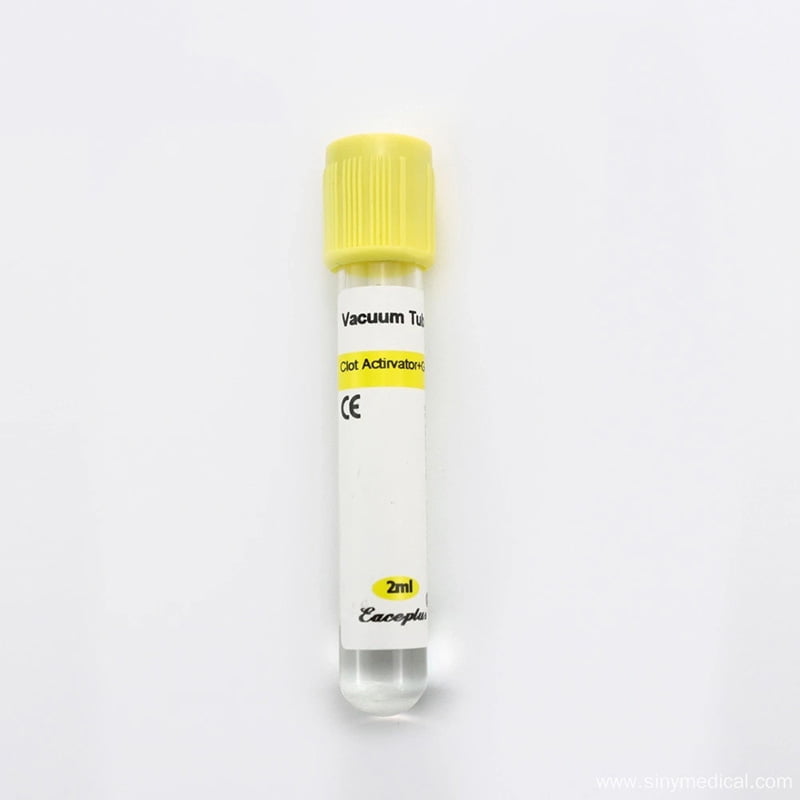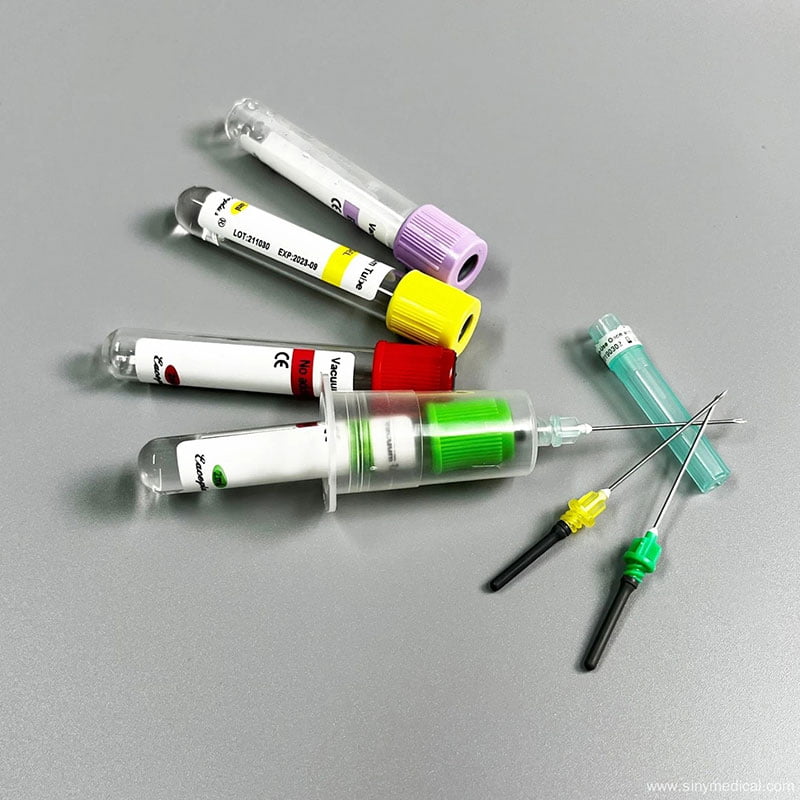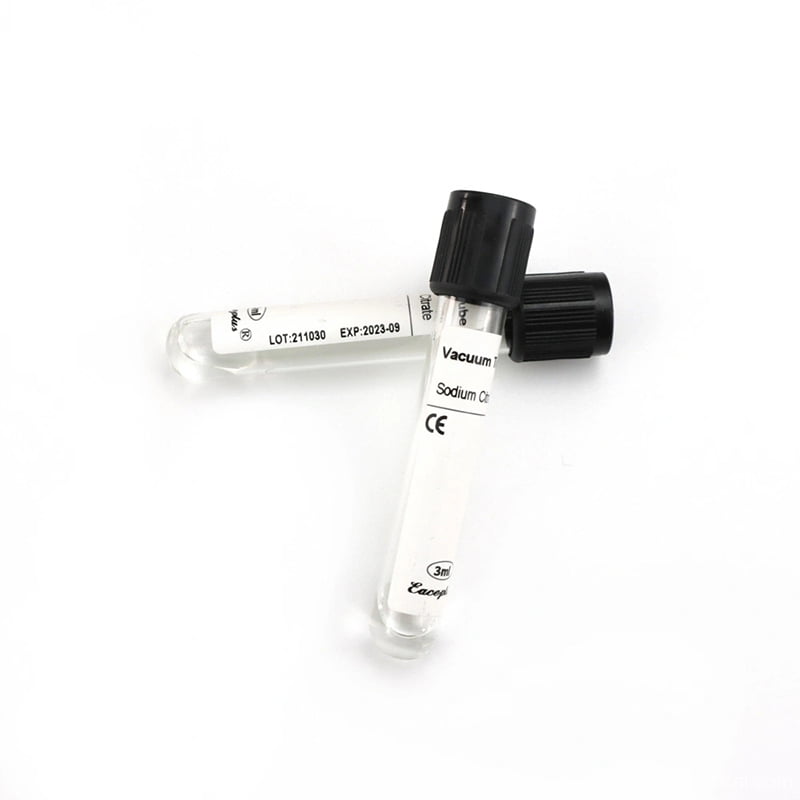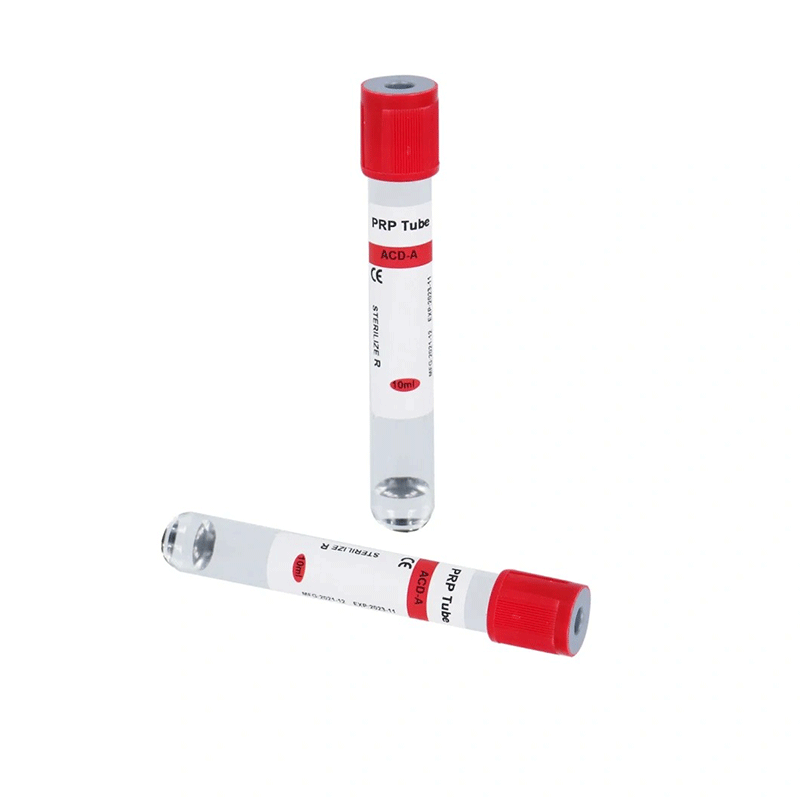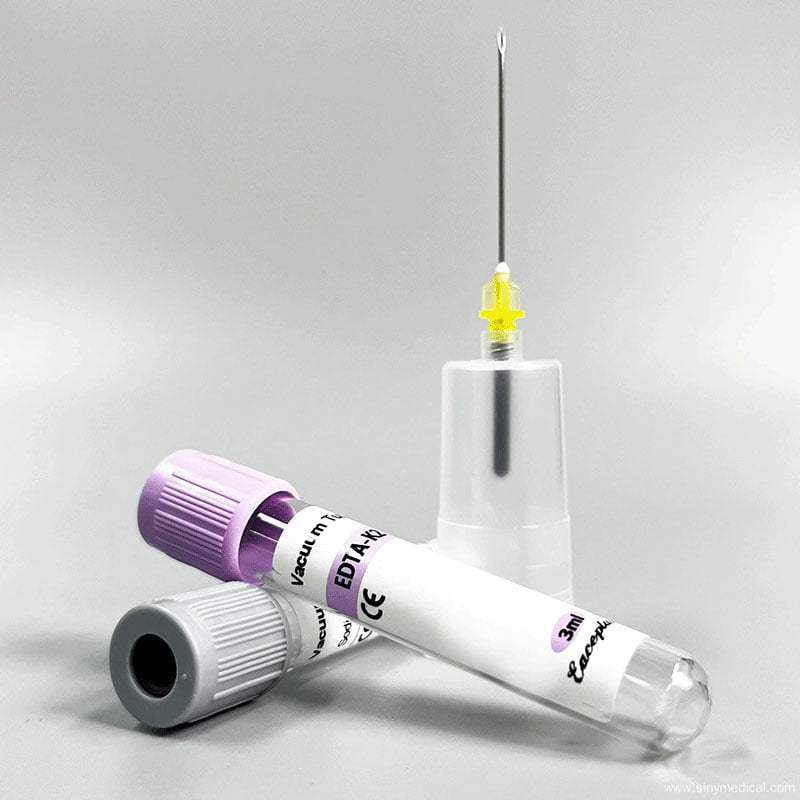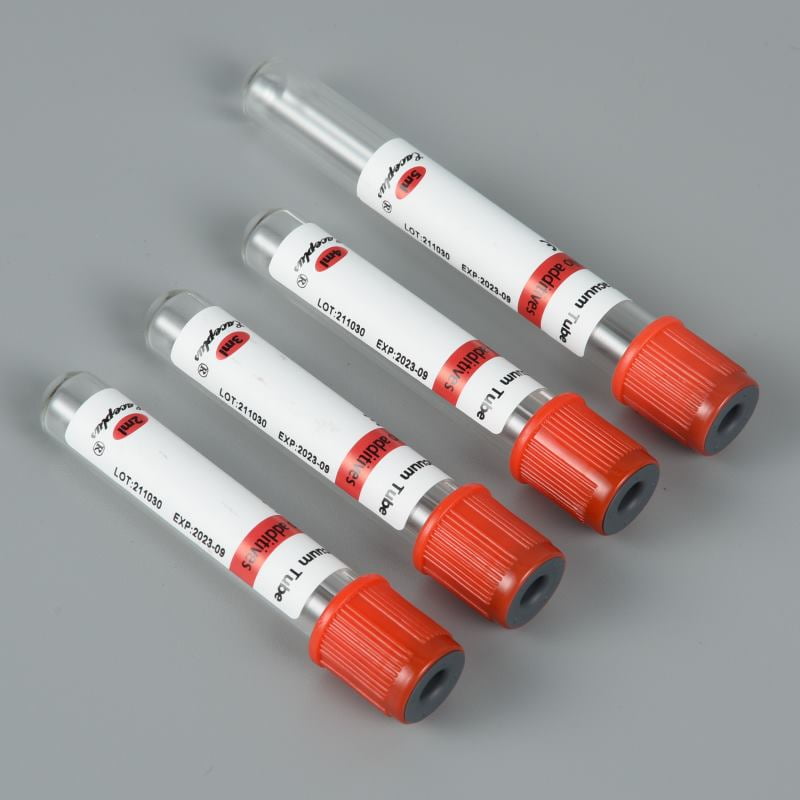When it comes to blood collection and intravenous access, the choice of needle can significantly influence patient comfort, the success of the procedure, and the quality of the sample collected. Among the various options available, butterfly needles have gained widespread preference, especially for accessing veins in the hand and wrist. This article explores in detail why butterfly needles are favored for these delicate veins, backed by research, clinical advantages, design features, and practical use cases.
For premium quality butterfly needles and related products, visit Siny Medical.
Table of Contents
- 1 What Is a Butterfly Needle?
- 2 Why Butterfly Needles Are Preferred for Hand and Wrist Veins
- 3 Butterfly Needle Sizes and Their Applications
- 4 How Butterfly Needles Work
- 5 Butterfly Needle Design and Components
- 6 Anatomical Challenges of Hand and Wrist Veins
- 7 Advantages of Butterfly Needles for Hand Venipuncture
- 8 Summary
- 9 FAQs
What Is a Butterfly Needle?
A butterfly needle is a thin, short needle attached to a flexible tube with plastic “wings” on either side. These wings allow healthcare professionals to hold and position the needle steadily, reducing the risk of slipping or injury. They’re commonly used for venipuncture, IV infusions, and blood draws, particularly from small or fragile veins—like those in the hand or wrist.

Components of a Butterfly Needle:
| Component | Function |
|---|---|
| Needle | Fine gauge stainless steel needle for smooth vein entry. |
| Wings | Flexible tabs for better grip and stability. |
| Tubing | Connects needle to syringe or vacuum collection system. |
| Hub/Connector | Attaches to collection tube or IV setup. |
For medical professionals seeking reliable and high-performance designs, SINY Medical Butterfly Injection Needles provide top-tier quality and precision.
Why Butterfly Needles Are Preferred for Hand and Wrist Veins
1. Precision and Control
Butterfly needles are specifically designed for accurate and stable insertion. The flexible wings provide a comfortable grip, allowing medical personnel to guide the needle smoothly into small veins. This control is particularly vital when accessing hand and wrist veins, which can be tiny and prone to rolling.
2. Enhanced Comfort
Traditional straight needles can be intimidating and painful, especially in sensitive areas. Butterfly needles, with their smaller gauges and gentle entry, greatly reduce pain and discomfort. Patients—especially children, elderly individuals, or those with chronic illness—appreciate the softer experience.
3. Reduced Vein Trauma
Because the needle remains steady and the tubing moves freely, there’s less risk of vein damage, bruising, or infiltration. This is especially important for patients requiring frequent venipunctures or long-term treatments.
4. Ideal for Fragile or Small Veins
Hand and wrist veins are close to the skin’s surface, small in diameter, and often used when larger veins (like those in the arm) are inaccessible. The low insertion angle (10–15°) of butterfly needles allows for a shallow, smooth entry that minimizes vein trauma.
Check out the full range of Butterfly Needle Products by SINY Medical designed for clinical precision and comfort.
Butterfly Needle Sizes and Their Applications
Butterfly needles come in various gauge sizes, each color-coded for easy identification:
| Gauge Size | Color Code | Common Use |
|---|---|---|
| 18G | Green | High flow infusions, blood donation |
| 21G | Green | Standard blood collection |
| 23G | Blue | Small or fragile veins (hand/wrist) |
| 25G | Orange | Pediatric and geriatric patients |
The 23G and 25G butterfly needles are most commonly used for hand and wrist veins due to their thinner size and gentle puncture.
For a closer look at professional-grade designs, visit SINY Medical Butterfly Injection Needles.
How Butterfly Needles Work
- The healthcare provider positions the “wings” between their thumb and index finger for precise control.
- The needle is inserted at a shallow angle into the vein.
- Once blood flow is visible in the tubing (flashback), the tubing allows movement without disturbing the needle’s placement.
- Blood flows into the attached collection tube or syringe.
- After use, an automatic safety cover or manual shield is activated to cover the needle.
Modern butterfly sets from SINY Medical incorporate safety mechanisms that reduce accidental needle-stick injuries, protecting healthcare staff and patients alike.
Butterfly Needle Design and Components
The butterfly blood collection needle derives its name from its distinctive winged design, resembling a butterfly’s wings when the plastic tabs are positioned for use. This deceptively simple device incorporates several critical components that work together to facilitate successful blood collection from challenging sites.
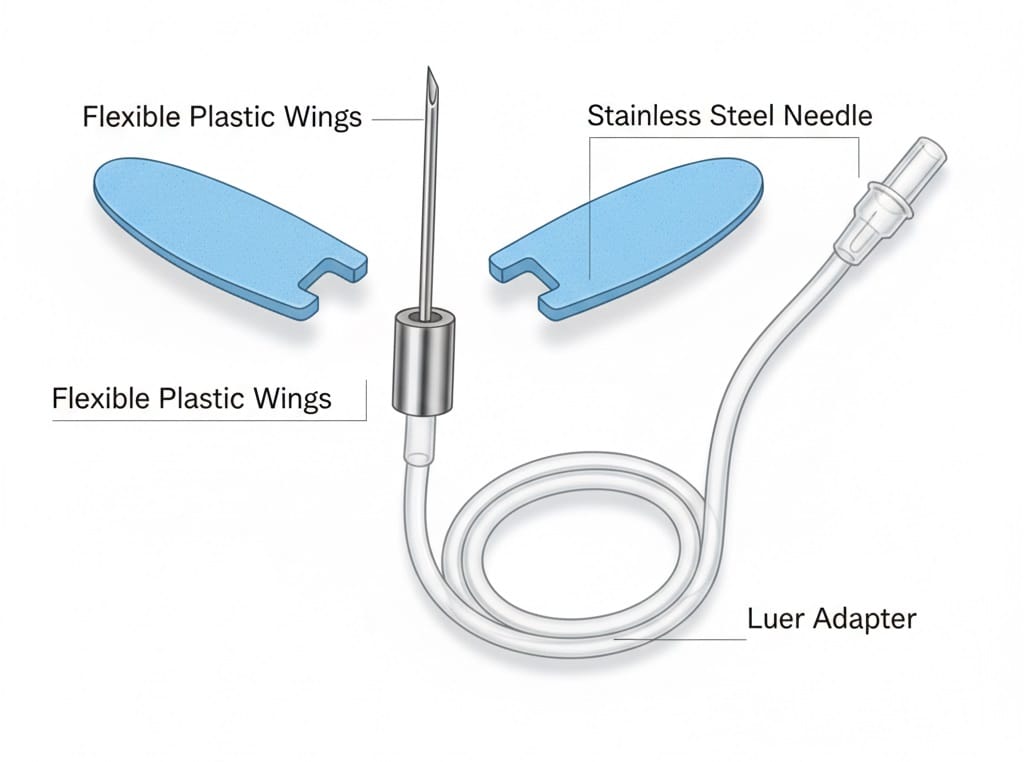
The Winged Tabs: Precision Control
The plastic wings flanking the needle hub serve multiple critical functions. These flexible tabs, typically measuring 15-20mm across when extended, provide superior tactile control during venipuncture. Healthcare professionals can grip the wings between thumb and forefinger, achieving precise needle angle adjustment that remains impossible with standard straight needles.
The wings also function as stabilization platforms once venous access is achieved. By taping the wings flat against the patient’s skin, phlebotomists secure the needle position, preventing accidental movement during blood collection or infusion therapy. This stabilization proves particularly valuable for patients who struggle to remain perfectly still, including children, elderly individuals, or those experiencing tremors.
Flexible Tubing: The Key Differentiator
The transparent plastic tubing connecting the needle to the collection device represents the butterfly needle’s most significant advantage. Ranging from 7 to 12 inches in length, this flexible conduit creates physical separation between the needle insertion site and the collection tube or syringe.
This separation delivers multiple benefits. First, it eliminates the weight and bulk of vacuum tubes pulling on the needle during collection. When using standard straight needles, the vacuum tube’s weight can cause the needle to shift within the vein, potentially causing discomfort, hematoma formation, or loss of venous access. The butterfly needle’s tubing absorbs these movements, keeping the needle stable within the vein regardless of tube changes or manipulation.
Second, the tubing allows healthcare providers to maintain an optimal needle angle throughout collection. Hand and wrist veins often require shallow insertion angles between 10-15 degrees. Without flexible tubing, holding this angle while managing vacuum tubes becomes physically awkward. The tubing permits natural hand positioning while keeping the needle perfectly positioned.
Third, transparency in the tubing provides immediate visual confirmation of blood flow, called “flashback.” Phlebotomists can observe blood entering the tubing within seconds of successful venipuncture, confirming proper placement before attaching collection tubes. This instant feedback reduces failed collections and minimizes patient trauma from repositioning attempts.
Needle Gauge Options
Butterfly needles typically come in gauges ranging from 21G to 25G, with some specialized versions available in 27G for neonatal applications. The smaller gauges (higher numbers) prove particularly advantageous for hand and wrist veins, which tend to be smaller in diameter than antecubital veins.
23-gauge butterfly needles represent the most popular choice for hand venipuncture, offering an optimal balance between blood flow rate and vein preservation. They cause minimal trauma to fragile vessels while maintaining adequate flow for most routine laboratory testing. For patients with extremely small or fragile veins, 25-gauge butterflies provide even gentler access, though collection time increases due to reduced internal diameter.
The needle length typically ranges from 0.5 to 0.75 inches, shorter than standard straight needles. This reduced length minimizes the risk of piercing through the vein (a common problem in superficial hand veins) and provides better control during insertion.
Connection Systems
The distal end of the butterfly tubing terminates in a Luer adapter compatible with either syringes or vacuum tube holders. This versatility allows healthcare providers to choose the collection method best suited to the clinical situation. For fragile hand veins susceptible to collapse under vacuum pressure, attaching a syringe enables controlled, gentle blood aspiration. When veins can tolerate standard vacuum pressure, the adapter connects to tube holders for conventional collection.
Modern Siny Medical butterfly injection needles incorporate safety features including retractable needles or protective shields that activate after use, significantly reducing needlestick injury risk for healthcare workers.
Anatomical Challenges of Hand and Wrist Veins
Understanding why butterfly needles excel for hand and wrist venipuncture requires examining the unique anatomical characteristics that make these sites challenging.
Vein Size and Depth
Hand and wrist veins differ substantially from the large antecubital veins typically preferred for venipuncture. The dorsal venous network on the back of the hand consists of smaller vessels, typically 2-3mm in diameter compared to 4-6mm for median cubital veins. These smaller vessels leave less margin for error during needle insertion.
The superficial nature of hand veins presents a paradox. While their visibility makes them appear accessible, their proximity to the skin surface increases perforation risk. A needle inserted at the same angle used for antecubital veins will pierce straight through a hand vein and out the other side. The shallow insertion angles required for hand veins demand equipment specifically designed for this approach—exactly what butterfly needles provide.
Vein Mobility and Rolling
Hand veins demonstrate significantly more lateral mobility than veins anchored in deeper tissue. The loose subcutaneous tissue on the hand’s dorsal surface allows veins to roll sideways when pressure is applied, evading needle insertion attempts. This rolling behavior frustrates phlebotomists using standard needles, which lack the precision control needed to track and stabilize moving vessels.
The cephalic vein at the wrist and basilic vein on the ulnar aspect offer slightly more stability due to their deeper position and connective tissue anchoring, but still exhibit more movement than antecubital veins.
Age-Related Changes
Hand veins undergo significant changes with aging, creating additional challenges. In elderly patients, loss of subcutaneous fat makes veins more prominent but also more fragile. The vessel walls thin and lose elasticity, becoming prone to rupture under the pressure of standard needle insertion or vacuum tube suction.
Venous valves, more numerous in hand veins than elsewhere, can create bumpy, irregular vessel contours that complicate needle advancement. Butterfly needles’ precision control helps healthcare providers navigate around or through these valves successfully.
Environmental Factors
Hand temperature profoundly affects vein prominence and accessibility. Cold hands experience vasoconstriction, shrinking already small veins and making them harder to visualize and access. Anxiety exacerbates this problem, as stress responses direct blood flow away from extremities toward core organs.
The hands’ high sensory nerve density makes them more pain-sensitive than the antecubital fossa. Patients often report hand venipuncture as more uncomfortable than arm sticks, creating anxiety that further complicates the procedure. The reduced trauma associated with smaller-gauge butterfly needles helps minimize this discomfort.
Advantages of Butterfly Needles for Hand Venipuncture
The unique design features of butterfly needles translate into concrete clinical advantages when accessing hand and wrist veins.
Image Details:
- Title: Butterfly Needle Hand Venipuncture Technique
- Filename: butterfly-needle-hand-venipuncture-technique-proper.jpg
- Alt Text: Healthcare professional demonstrating correct butterfly needle insertion technique for dorsal hand vein blood collection
- Description: Step-by-step photographic sequence showing proper butterfly needle insertion angle, wing positioning, and stabilization for hand venipuncture
- MidJourney/GPT Prompt: “Medical training photography showing phlebotomist’s hands performing butterfly needle insertion on patient’s hand, close-up view, proper technique demonstration, professional healthcare setting, clear focus on needle angle and wing positioning, clinical lighting”
Superior Control and Precision
The winged design of butterfly needles provides unmatched tactile control during the critical moments of venipuncture. Phlebotomists can feel subtle changes in tissue resistance as the needle advances through skin, subcutaneous tissue, and finally into the vein lumen. This tactile feedback, combined with the visual flashback in the tubing, provides dual confirmation of successful access.
The ability to hold the wings while inserting the needle enables shallow insertion angles essential for superficial hand veins. Phlebotomists can approach the vein at 10-15 degrees, gently threading the needle into the vessel parallel to its course. This shallow approach minimizes tissue trauma and reduces the risk of perforating the vein’s posterior wall.
Reduced Vein Trauma
The smaller gauge options available in butterfly needle collections cause less mechanical damage to fragile hand veins. A 23-gauge butterfly creates a smaller puncture wound than a 21-gauge straight needle, preserving vessel integrity and reducing healing time.
The flexible tubing also protects veins from the mechanical stress of tube manipulation. During multi-tube collections, the weight and movement of switching vacuum tubes can torque a rigid straight needle within the vein, causing intimal damage or complete perforation. Butterfly needles absorb these movements, maintaining stable vein access throughout collection.
Enhanced Patient Comfort
Patients consistently report less pain with butterfly needles compared to standard needles for hand venipuncture. Multiple factors contribute to this improved comfort. The smaller gauge creates less tissue disruption. The shallow insertion angle follows the vein’s natural path rather than forcing through multiple tissue layers. The secure stabilization once wings are taped prevents the painful tugging and movement associated with rigid needles.
The psychological comfort of seeing experienced phlebotomists select butterfly needles for their hand veins also matters. Patients often perceive butterfly needles as a “gentler” option, reducing anticipatory anxiety that can amplify pain perception.
Improved Success Rates
Clinical studies demonstrate significantly higher first-stick success rates when butterfly needles are used for challenging venous access sites. The combination of precise control, visual feedback, and reduced vein trauma means phlebotomists establish and maintain access more reliably than with straight needles.
For difficult-draw patients—including those with small veins, history of failed collections, anxiety, or medical conditions affecting venous access—butterfly needles often represent the difference between successful collection and the need for alternative access methods. This improved success translates to reduced patient trauma from multiple needle sticks, decreased anxiety for future collections, and more efficient workflow for healthcare staff.
Versatility in Collection Methods
The Luer adapter connection allows phlebotomists to choose between syringe aspiration or vacuum tube collection based on the specific clinical situation. Fragile hand veins prone to collapse benefit from gentle syringe aspiration, where healthcare providers control negative pressure. More robust veins tolerate direct vacuum tube collection, offering faster completion times.
This versatility also facilitates blood culture collection from hand veins. The flexible tubing accommodates sterile technique requirements while maintaining stable vein access during the careful, contamination-free collection process.
Summary
Butterfly needles are a game-changer in medical procedures involving hand and wrist veins. Their precision, reduced pain, and compatibility with fragile veins make them a preferred choice for healthcare professionals. Whether for blood collection or IV therapy, these needles enhance patient comfort and procedural success.
For more information on our products, visit Siny Medical or explore our Butterfly Needle Category.
By incorporating butterfly needles into your medical practice, you can ensure a safer, more comfortable experience for your patients. For inquiries or to place an order, contact us through our Contact Siny Medical.
FAQs
1. Are butterfly needles less painful than standard needles?
Yes, butterfly needles are thinner and shorter, making them less painful for patients, especially in sensitive areas like the hands and wrists.
2. Can butterfly needles be used for all types of veins?
While butterfly needles are ideal for small or fragile veins, they may not be suitable for larger veins.
3. How do I choose the right butterfly needle?
The choice depends on the patient’s vein size and the procedure. Consult our Blood Collection Needle page for guidance.
4. Are butterfly needles reusable?
No, butterfly needles are single-use devices to prevent infections and ensure safety.

